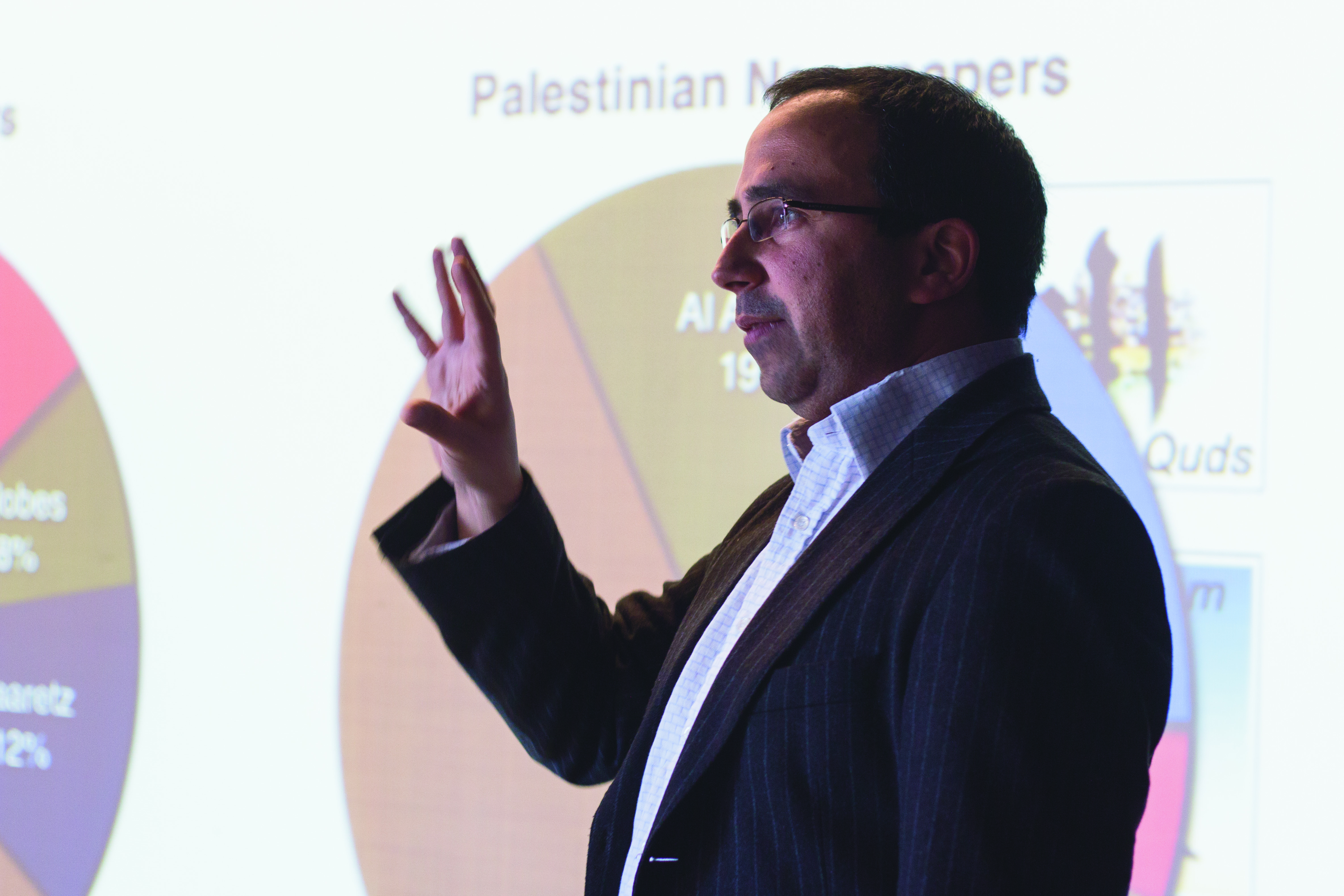Drawing the tension between Palestine and Israel could further aggravate conflict
To some, media can create an essential sense of awareness. Others view media as a negative and conflict creating outlet. Political cartoons are a form of media which have been the centre of controversy. Whether humorous or dramatic, the worry that arises with the publication of these drawings cause many to wonder—do political cartoons promote violence?

“There is a lot of effort taken to silence cartoons or cartoonists,” said Ilan Danjoux, affiliate assistant professor of the Azrieli Institute of Israel Studies at Concordia University at a talk at Concordia University on Jan. 27.
In rise of the current political climate between Palestine and Israel, Danjoux warned conflict can emerge as a result of the media’s influence. Danjoux studies the effects of political cartoons, tying it to the current strain in the Middle East.
“The number of cartoons is a good indicator of how conflictual an era is,” Danjoux said. He addressed this conflicts in his book, Political Cartoons and the Israeli-Palestinian Conflict. During his talk, Danjoux brought light to many examples of editorial cartoons published by Israeli and Palestinian media in the weeks approaching the second Intifada—a period of intense Israeli-Palestinian violence which started in 2000.
The main focus of Danjoux’s talk was to ask if political cartoons provide expressive freedom or evoke violence. “Cartoons invite action—I think that’s the most interesting aspect of cartoons,” Danjoux said. “[With] the sense of chronicle violence, they actually monitor violence.”
Political cartoons have been prominent since the rise of Nazi Germany with the use of satirical cartoons of Hitler and the Nazi party, said Danjoux. These cartoons were distributed in Germany in an attempt to turn the population against Nazi leaders.
Danjoux describes cartoons as “images of events that are yet to unfold.” These cartoons are used to creatively bring attention to rising issues. In regards to Israeli-Palestinian conflict, many of the prominent issues these cartoons reference include the Jerusalem wall, the Holocaust, the economy and Israeli and Palestinian leaders.
Many of the drawings depicted in cartoons have never happened which Danjoux explained are used to “insinuate motive and insinuate consequence and so they are openly offensive … I want to argue that the incompleteness of cartoons offers an insight into the undercurrent of conflict,” he added.
Danjoux studied different properties of political cartoons in Israel and Palestine, drawing on newspapers that were more anti-semitic or anti-Islamic than others. Danjoux said some people have accused him of only studying certain cartoons to point out extremism or racism, but he argued that he studies a wide variety of cartoons, not just the extremist ones.
While Danjoux was studying cartoons during the conflict between Israel and Palestine in 2000, he found the largest publisher of Israeli cartoons was Yediot Ahronot, a newspaper based in Tel Aviv. On the other side, the greatest amount of Palestinian cartoons were found in Al Quds, based in Jerusalem.
An issue many people have with political cartoons are how certain figures are inaccurately represented. While written media must accurately portray current events and political figures, cartoons are not required to follow this exact format. These cartoons often “physically distort the outside to what’s on the inside,” Danjoux said. This can be seen in cartoons of former U.S. president George W. Bush: at the beginning of his first term, Bush’s head was drawn at a regular size. However, as his presidency progressed, his head gradually decreased in size—showing that “Americans perceived him as less intelligent as time went by,” said Danjoux.
While conflict may arise in spite of political cartoons, for many readers who choose not to follow politics, political cartoons help develop a structure of what issues they should be concerned about. Cartoons also help to provide a visual approach to a world view, as well as give people who may not speak the language a sense of current issues in the media.



